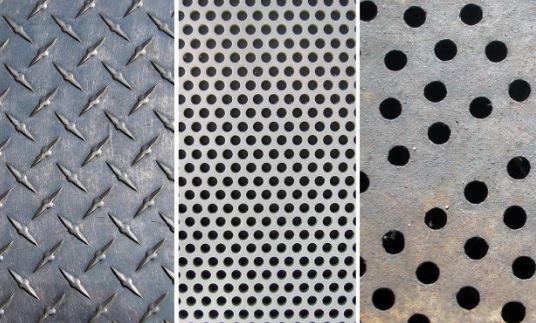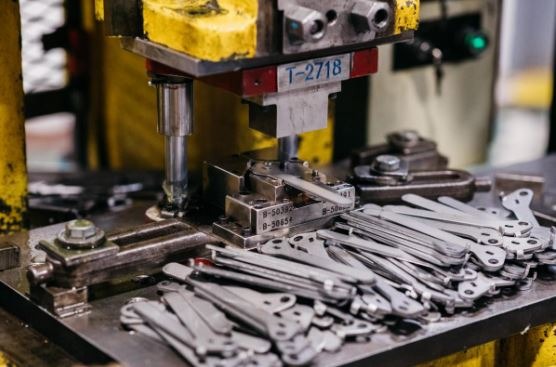When we think of metals we don’t necessarily consider stamping or a part of it but it is a practice that has been around for decades, and although we may not initially take notice it is everywhere around us. More than we realize.
It has become a symbol somewhat of design and personalization and is taking the world by storm, combined with the fact that it can be done in mass amounts whilst maintaining quality makes it the perfect element to create your products and brands.
What then makes it so sought after, how are the processes thought of and executed, and more importantly as someone looking to have something manufactured, how and where can it be done. We will take a look and discuss some of these elements in this article to give you some guidance, information, and facts to help make the decision that much easier.
Metal stamping.
Understanding what it is should be the first step so you know what you are getting yourself in for and what to expect. In simple terms and for those of us who may be new to the world of metal sheeting and fabricating, metal stamping is when a sheet of metal is placed onto the work surface and is molded and shaped to the designed form using a tool and die machine.
Depending on the complexity of the design, and we have seen them increase in details and working elements, a variety of dies will be used in one production line process. Different methods are used specifically to function requirements such as bending, piercing, punching, or blanking and we will delve deeper into these to give you an idea of the options that are available and what might best be suited for your project.
Bending.
Essentially, this does what it says on the tin. The metal is bent into either a U or a V shape ready for the next component to be added to it or in most cases linked to create a new use, it is also the main practice used for adding channels to a piece of metal.
What we may not know is that when metal is bent the natural reaction is to bounce back to its original shape, thus to create the V shape the sheet metal is ‘over-bent’ so when it does spring back it maintains its shape in the required V rather than simply flat again. So, in a nutshell, to get the desired shape you need to push the metal past its limits for it to bounce back to the shape you want.
To see more about this technique click here https://en.wikipedia.org/wiki/Bending_(metalworking) and this way you not only get to see the method with pictures but gain a deeper insight into this practice that is a key component in today’s manufacturing world.
Piercing.
This practice is used when a large amount of 1 shape is needed, and for the most part, when piercing metal, the scrap metal parts are used. A tool and die then pierce the metal making a hole. Similar to the look of packaging bubble wrap only this is perforated.
Blanking.
The best way to describe and think of this process is like that of cutting out a shape from a piece of paper, the part that is cut out is the needed and usable part. The same goes for metal blanking where a shape is cut out from a larger piece of metal, and the cut-off component is the one needed.
Punching.
Essentially, this is the opposite of blanking where the cutout piece (or slug as it is also known) is now the scrap part and the sheet with the shaped hole cut out is the part used.
Bringing it all together.
You need a project completed, a variety of smaller, and more intricate components assembled to produce your product, and you may well have explored other material options, but could metal sheets and stamping be the solution to your dilemma? Many plus indicators would agree yes, let’s see a handful of those and conclude if it helps with your decision.
If you are limited on time then metal stamping is a good way to ensure not only uniformity of product, but a reduction in costs. This is because once a die has been cast a large number of units can be produced for the same costs if not less than more individual items and in less time. Win-win.
This is why using a company that understands your needs, takes into considerations deadlines and requests, and comes to an agreement with you on how to move forward and make it happen, will make the whole process that much smoother. Businesses such as UHI Group – Metal Components Machine Shop can make your sketches, doodles, and dreams become a physical reality.
And with the process being completed and executed in a fraction of the time, you have the flexibility to increase the finer details making the items that much more bespoke. Sheet metal is highly malleable and this allows for impressions, shaping, and perforating as you see fit, machines are programmed to carve out even the most minuscule lines or indentations and then repeat the process a thousand times over with precision every time.
A final thought on the topic.
We have all had an opportunity at one point in our lives to live a dream, irrespective of how small it may be, and to see it come to fruition. And if it means that manufacturing products and items using sheet metal and the expertise of industry professionals to get the job done then what have you got to lose?
Life is too short to wait for the ‘perfect’ moment, or when you have everything under control because you will be waiting a long time if not forever, take the leap, make the move, and build that empire. Who knew that being financially successful could come from a small, molded piece of sheet metal, albeit it branded with your company logo.

